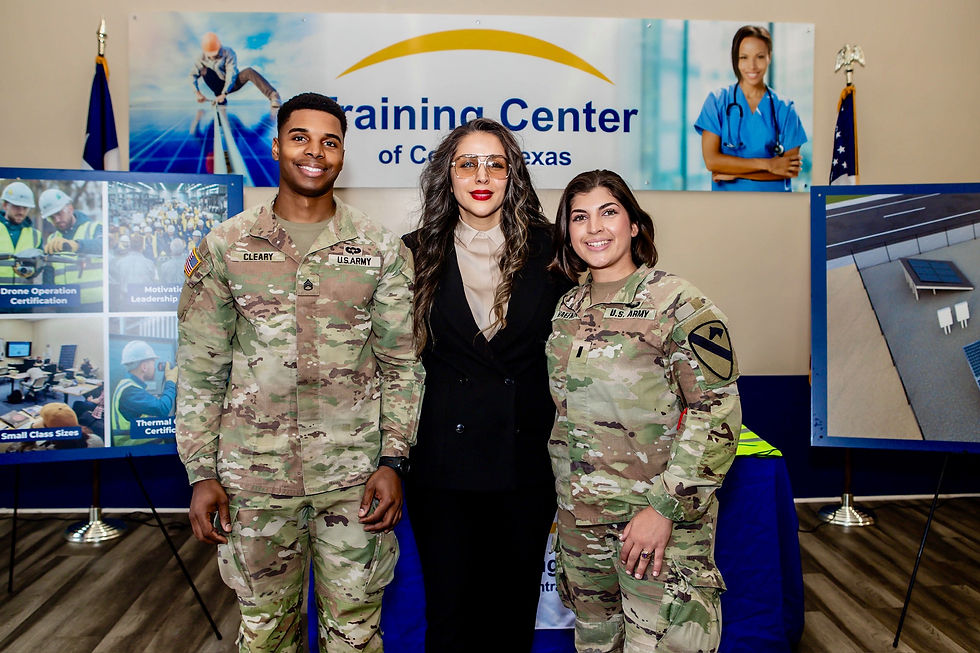Augmenting the Eye—How AI is Elevating Diagnostic Training at CMA-AI
- Saran Lotfollahzadeh

- Apr 24
- 2 min read

A Personal Lesson in Missing the Details
Years ago, I remembered reviewing a chest CT late in the afternoon during my residency. Exhaustion was setting in, and I nearly overlooked a subtle but critical finding—until a colleague caught it. That moment stayed with me, not because of the inevitable error, but because it reminded me of our human limitations, especially under a workload.
Fast-forward to today, and I now watch our integrated curriculum in The Training Center of Central Texas. The Training Center of Central Texas students train with the foundations of diagnostic tools that support, not replace, their clinical eye—tools that offer a second glance, a deeper scan, and just maybe, a life-saving catch.
More innovative Tools, Sharper Eyes
At CMA-AI Training Center of Central Texas, we teach our students that technology doesn’t take over clinical care—it augments it. In our diagnostics training, students are introduced to:
AI-enhanced imaging platforms that flag patterns and anomalies
Lab analysis tools that predict risk scores and cross-check trends
Integrated patient dashboards that pull together data for more precise interpretation
These tools don’t give answers—they prompt questions. And in the hands of a well-trained student, those questions become the foundation for better care.
A Learning Curve We Embrace
Like all technologies, we also recognize that these systems require a learning curve. AI models are still evolving, and students must learn to train, interpret, and sometimes challenge what these tools suggest. There will be inconsistencies, missed signals, and imperfect outputs. But that’s not a reason to delay progress. At CMA-AI, we believe learning should not stop while the tools improve. Instead, we train students to grow alongside the technology—to question, validate, and refine their clinical judgment with intelligent systems.
Early Detection, Fewer Errors
We emphasize that the value of AI in diagnostics is not about speed alone. It’s about:
Catching subtle changes that even trained eyes might miss
Flagging inconsistencies in lab results for early intervention
Reducing variability in how findings are interpreted
In every scenario, our students are learning to use AI not as a crutch, but as a clinical amplifier—a tool that enhances clarity and reduces risk.
Real Cases, Real Confidence
In one of our simulations, a student flagged a potential abnormality in an ultrasound scan—thanks to the AI’s subtle prompt. She paused, reviewed, and made a call that mirrored what a seasoned provider would do. That kind of insight doesn’t come from reading about AI. It comes from training with it actively and often.
Conclusion: Human Care, Enhanced by Machine Insight
At Training Center of Central Texas CMA-AI, we’re not creating robots—we’re making real healthcare professionals who can pair clinical instinct with technological tools. When you teach students how to trust their training and use innovative diagnostics, you’re not just reducing errors.
You’re raising the standard of care.
By Saran Lotfollahzadeh, MD, MSCR Candidate
MD, General Surgeon, Pediatric Surgery Sub-Specialist
MSCR Candidate
AHA Cardio-Oncology SFRN Fellow
Medical Director, CMA-AI Training Center of Central Texas
Instructor in Medicine



I love the idea of integrating AI into the medical field as a second set of eyes to help prevent human error.
Incredible integration of technology and training! 🔍📊 Love how we at the Training Center of Central Texas, CMA-AI, teach students to use AI and think with it—real clinical instincts amplified by innovative tools. This is how we shape the future of safer, more competent healthcare. 💡👩⚕️👨⚕️ #NextGenCare #AIinMedicine